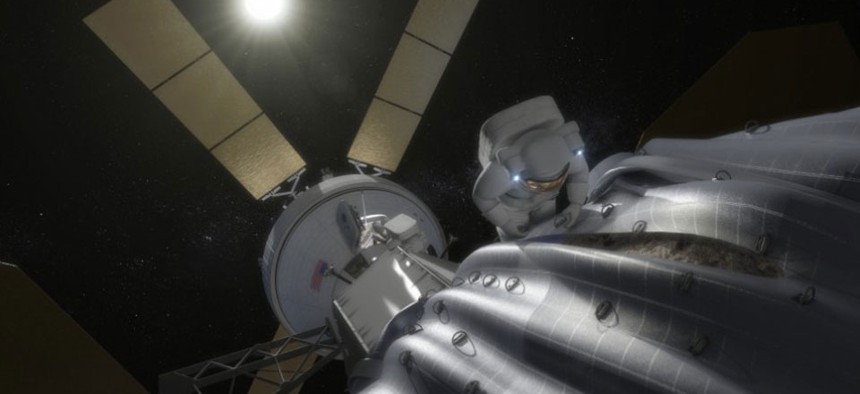NASA's 'Asteroid Hunter' Is Back in Action

NASA illustration
It's looking for a rock where we can land humans next decade.
You can have the moon, China. Leave the asteroid re-routing to us.
NASA's asteroid hunter is back in action, and it's looking for a rock where we can land humans next decade. The agency calls its plan—on pace for 2025—"the first mission to identify, capture, and relocate an asteroid."
In less than two years of operation, NEOWISE (Near-Earth Object Wide-field Infrared Survey Explorer) discovered more than 34,000 asteroids as part of its initial mission. Now, after two-plus years of hibernation, the ship is on the job again.
"Over the next weeks and months we will be gearing up our ground-based data processing and expect to get back into the asteroid-hunting business, and acquire our first previously undiscovered space rock, in the next few months," said the agency's Amy Mainzer.
NASA released images taken by the craft this week, calling them just as good as the ones taken during its 2010-11 run. The ship uses a 16-inch telescope and infrared cameras to find asteroids that come within 28 million miles of Earth. During its earlier mission (when it was known as WISE), it tracked the entire sky. Now, it's focused on close-by objects to "protect our home planet."
Right now, the plan is to use a capture bag—which looks like a giant parachute—to engulf an asteroid and allow astronauts to study it. NASA plans to pull the rock into a stable orbit after nabbing it.
Back on the ground, NASA engineers are testing suits for astronauts to use to explore the captured asteroid. The suits are being tweaked to work with the Orion spacecraft and improve mobility for spacewalks. One prototype is a modified version of NASA's "pumpkin suit."
If NEOWISE sends back pictures anything like the ones it caught in its first run, it will be worth keeping an eye on. Here's a dying star surrounded by tracks of asteroids.
The project isn't without controversy. Earlier this year, House Republicans on the Science Committee tried to scrap the mission as part of a plan to cut NASA spending and return the focus to moon missions. The Senate, however, passed a NASA spending bill with higher levels and no direction to end the asteroid program. Congress has yet to resolve its final plan for the agency.





